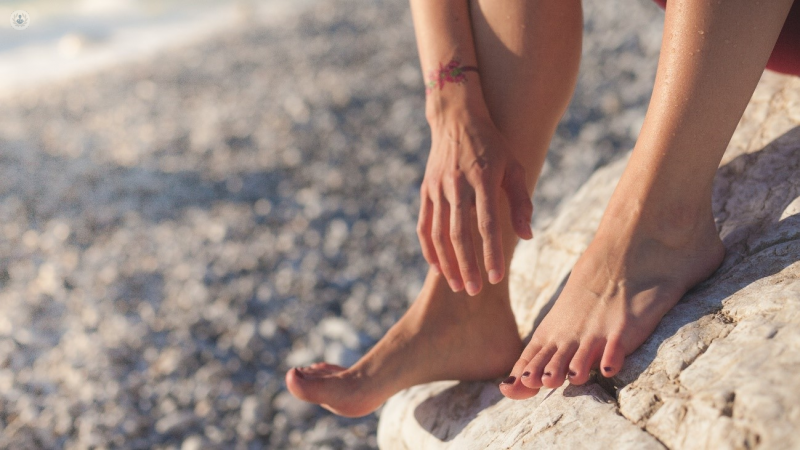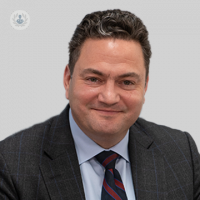How to relieve toe pain
Written in association with:Pain in the toe can be caused by many abnormalities or injuries to any of the structures in the toe, with inproper footwear being one of the most common contributors to this. But, would you know how to properly relieve this type of toe pain? Mr Dean Michael, a consultant orthopaedic surgeon answers our questions on the matter.

What is the anatomy of the toes and what is their purpose?
Toes are the digits of the foot. They comprise of three bones and two joints. The big toe, also known as the great toe, is different and is made up of two bones and one joint.
They help us to achieve balance and propulsion when walking or running. They also have an abundant nerve supply which provides sensory feedback to the brain enabling us to gain information about the surface on which we are standing and make changes in order to maintain our balance.
What are the causes of toe pain?
Toe pain can either be related to degeneration of the joints, or as a result of pressure symptoms in footwear secondary to deformities of the toe.
Sometimes pain in the toes comes from other sources, for example in the case of a Morton’s Neuroma or vascular disease.
What are the symptoms of toe problems?
Toe symptoms are divided generally into either deformities or pain. This symptom of pain can be accompanied by numbness, warmth or a burning sensation.
What are the characteristics of toe deformities?
Toe deformities vary according to whether it involves the great toe or the lesser toes.
- Bunions - The great toe can be affected by a condition called hallux valgus, commonly known as a bunion, which is a lateral deviation of the toe. This produces a bony prominence on the medial side of the toe which can become painful and inflamed.
- Arthritis - The great toe is also frequently affected by arthritis. This is called hallux rigidus which is Latin for stiff big toe. Arthritis of the great toe can be accompanied by bony spurs around the joint, which are often mistaken for a bunion. These can cause large bony swellings that may result in pressure from footwear.
- Mallet toe or hammer toe - lesser toe deformities are either known as a mallet toe or hammer toe, which are flexion deformities of either the proximal or distal joint. Whilst the deformities can be uncomfortable, pain is more commonly caused by pressure symptoms as the deformed toe rubs on footwear.
How can I relieve toe pain at home?
Toe pain can often be improved or relieved by appropriate changes to footwear.
Usually, pain from an arthritic toe is improved by wearing a shoe with a thicker or rigid sole. This protects the joint from movement and therefore relieves the pain.
Pain from hallux valgus or bunions are improved by wearing soft or broad shoes.
Mallet or hammer toes can be improved by wearing a shoe with a more pronounced toe box which allows plenty of room for the toe without any pressure. There are various pads or plasters that are available on the market which will alleviate pressure and prevent pain.
When will I need to see a specialist?
If you are concerned by the appearance of the foot and if pain symptoms are not alleviated by acceptable footwear modifications, then you should consider getting an opinion from an expert.
Special surgical shoes can be made or orthotics could be helpful, but if this is not suitable then consideration of surgical correction is normally advised.
If you are experiencing toe pain and would like to see a specialist about this, book an appointment with Mr Dean Michael and visit him in his clinic.



